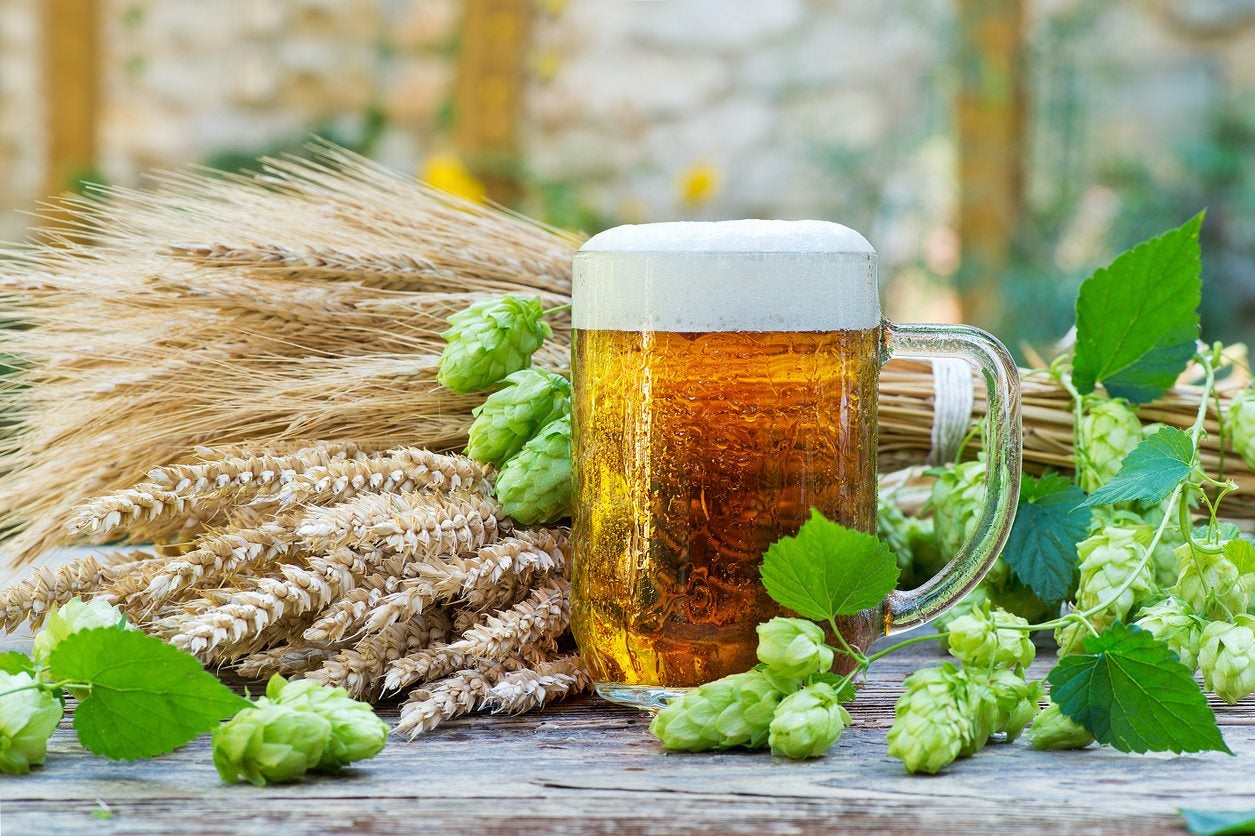Growing A Beer Garden: Planting Beer Ingredients In The Garden


If you are a beer lover, brewing your own batch may be a dream that can be achieved in your own garden. Hops are a key ingredient to that perfect glass of suds, and they make an attractive addition to the landscape too. Knowing what plants are in beer and how to create a signature brew is the first step. Beer garden plants may be the perfect complement to an existing garden or to a completely new landscape concept. We'll offer some tips on how to grow a beer garden and integrate the necessary ingredients into your outdoor living space.
Growing a Beer Garden
Home beer brewing has taken off as a personal hobby and enthusiasts everywhere have developed their own take on this classic alcoholic beverage. Producing your own beer ingredients in the garden gives easy access and allows you to control your personal blend. Selecting the right hops variety is the first step, as each cultivar has specified zonal requirements and flavors. Then you can experiment with different spices and fruits as you find your way to the most pleasing palate sensation. Beer is a hallmark of barbecues, sporting events, and the end of the week happy hour. It is such a commonplace beverage that a Harris poll found 38 percent of regular American drinkers preferred beer as their beverage of choice. The numbers are consistent in many other major European countries as well. Craft beer breweries are on the rise and home brewers are a niche market that is also experiencing increases in numbers. So, if you want to try your hand at brewing your own blend, growing a beer garden is a good start.
Beer Garden Plants
Hop along to brewing success with the most important of beer ingredients in the garden – hops. These grow from bines, which are similar to vines and can be purchased as rhizomes. These fast-growing plants can achieve 15 to 20 feet (5-6 m.) in one season and typically die back in winter, only to rise again the following spring. Each hop cultivar has a different flavor, noted by its designation as either a bittering or aromatic plant. Bittering hops give the dense, dark notes of high acid levels. Aromatic hops brighten beer and brings both the scent and flavor to the brew. Some suggestions might be:
- Willamette - Aroma
- Centennial - Aroma
- Cascade - Aroma
- Nugget - Bitter
- Newport - Bitter
Beer garden plants encompass much more than just hops, although the beverage is consistently dependent upon a good hop blend. You also need to personalize your brew with items like juniper berries, citrus, coriander, sweet gale, heather, and woodruff, which lend classic notes to your personal blend. Many common herbs are used to "bitter" or flavor the beer and also to add aromatic tones. These may include: Bittering Herbs
Aromatic Herbs
Flavoring Herbs
How to Grow a Beer Garden
Now that you know what plants are in beer, a few tips on hops growing can help send you on your way. Hops grow from stem cuttings or rhizomes. Rhizomes will establish quickly but due to their rapid growth, they need a sturdy structure over which to grow. Hop bines wrap around a support as they develop. The plants prefer well drained soil, especially slightly sandy sites. Choose a sunny location and plant in spring with each rhizome 24 to 36 inches (61-91 cm.) apart. By mid to late spring, choose three sturdy bines from each plant and prune the others. Train the three bines using baling twine or other strong cord. Once they reach the top of your structure, they will produce side bines which will bear the cones. Remove the lower 2 to 3 feet (61-91 cm.) of foliage to promote air circulation and prevent the spread of disease. During the first year, few cones are produced, as the plant is busy developing a good root and crown system. Established plants need 1 ½ inches (4 cm.) of water per week, preferably from the base. Remove cones, dry them, and store them in sealed bags until ready to use. Group additional plants in the beer garden based on their specific growing conditions and harvest as needed.
Sign up for the Gardening Know How newsletter today and receive a free copy of our e-book "How to Grow Delicious Tomatoes".

Bonnie Grant is a professional landscaper with a Certification in Urban Gardening. She has been gardening and writing for 15 years. A former professional chef, she has a passion for edible landscaping.